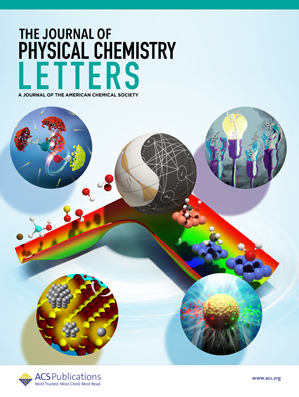Room-Temperature Decomposition of the Ethaline Deep Eutectic Solvent
IF 4.8
2区 化学
Q2 CHEMISTRY, PHYSICAL
引用次数: 0
Abstract
Environmentally benign, nontoxic electrolytes with combinatorial design spaces are excellent candidates for green solvents, green leaching agents, and carbon capture sources. We examine ethaline, a 2:1 molar ratio of ethylene glycol and choline chloride. Despite its touted green credentials, we find partial decomposition of ethaline into toxic chloromethane and dimethylaminoethanol at room temperature, limiting its sustainable advantage. We experimentally characterize these decomposition products and computationally develop a general, quantum-chemically accurate workflow to understand its decomposition. We find that fluctuations in the hydrogen bonds bind chloride near reaction sites, initiating the reaction between choline cations and chloride anions. The strong hydrogen bonds formed in ethaline are resistant to thermal perturbations, entrapping Cl in high-energy states and promoting the uphill reaction. In the design of stable green solvents, we recommend detailed evaluation of the hydrogen-bonding potential energy landscape as a key consideration for generating stable solvent mixtures.

求助全文
约1分钟内获得全文
求助全文
来源期刊

The Journal of Physical Chemistry Letters
CHEMISTRY, PHYSICAL-NANOSCIENCE & NANOTECHNOLOGY
CiteScore
9.60
自引率
7.00%
发文量
1519
审稿时长
1.6 months
期刊介绍:
The Journal of Physical Chemistry (JPC) Letters is devoted to reporting new and original experimental and theoretical basic research of interest to physical chemists, biophysical chemists, chemical physicists, physicists, material scientists, and engineers. An important criterion for acceptance is that the paper reports a significant scientific advance and/or physical insight such that rapid publication is essential. Two issues of JPC Letters are published each month.
 求助内容:
求助内容: 应助结果提醒方式:
应助结果提醒方式:


